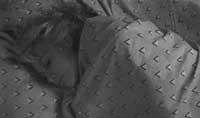Diseases of the nap
What do we call siesta?
The word siesta, and so called laziness and sleep time after meals, is originally Latin, seems to come from the sixth hour of the Romans (“sixth”). I've found in dictionaries the words BIAGO, BIAO, but I think they're hardly going to remove the place they won over the years to loan.

The nap has always been considered a Spanish custom and invention; to be able to join more developed countries it is necessary to forget or discard. But, although it has been believed otherwise, siesta is not a mere sign of misfortune, nor can it simply be associated with many meals. Various studies carried out with the aim of analyzing the biological rhythms of sleep and gaze have shown that the human body has a natural tendency to endure these periods of sleep in the early hours of the afternoon.
Reporting on the investigations
The need for nap or “sleep” of the body was demonstrated for the first time in 1986, when Professor Scott Campbell of the Boston Circadian Physiology Institute and sleep researchers of the Munich Max Planck Institute showed that siesta is related to biological seasons.
The best time for nap begins between eight and twelve hours after the night sleep. Therefore, the person who lies at 12 o'clock in the evening and gets up at 7 o'clock in the morning will feel the need to sleep around 4 o'clock in the afternoon.
But research in recent years has shown that sleeping after eating has unbeatable therapeutic characteristics, as in addition to improving digestion, it also helps prevent infarction. The daily half-hour siestita reduces the probability of suffering from coronary artery disease by 30%. And why? With this rest, cardiac expenditure and blood pressure are reduced.
The nap, for its part, is an antidote against stress and nerves that provoke or provoke developed societies, and a measure to maintain the psychological balance in its starting point, especially for people with strong working hours. Scientists agree that after nap the brain works better, that mental agility is greater, that reflexes grow and humor also improves.
The benefits of nap are lost if it is too long. In order to have beneficial effects on the body and not to confuse the night sleep, the nap should be between 30 and 90 minutes, according to Dr. Broughton, professor of neurology at the University of Ottawa.
People over 65 are the most siege. And thanks to those afternoon breaks, approximately half of the retirees get to sleep more than eight hours a day.
According to the autonomous communities, the Catalans are the least overnight in all of Spain, while the Basques are the most lotones according to data from the last National Congress of Clinical Neurophysiology.
In addition to all of the above, at present the nap is considered profitable. Those who enjoy and practice this custom are not lazy or useless. And the clearest example we can see in the area of Japan, a society as laborious as it is that recommends performing a nap for better performance at work. In fact, several European and Japanese companies have enabled special offices for their employees, so they can make small bedspreads, after checking that after one of them productivity increases by 20%.
The greatest enemy of the Siesta, however, is progress. As the people become industrialized, their inhabitants gradually renounce this custom, since the afternoon hours are distributed and organized differently. In Spain, for example, only 10% of the population practices this healthy habit.
Britain’s Prime Minister, Winston Churchill, broke up countless convictions about the siesta, confessing that in World War II the siesta was taking place every day to “regain strength.”
For his part, Salvador Dalí forced the guests who met in his house, in addition to making the nap, to return to rest after eating. This Catalan artist, for his part, made the siesta shorter, since at the end of the coffee he was sleeping on the table with the pot in his hand until he fell on the plate. Then, the noise indicated that he had slept enough.
The last Spanish winner of the Nobel Prize in Literature, Camilo José Cela, is also a disgraced supporter. And he says he is fond of classical naps because he does “pyjamas, godfather, with urinary”.
Siesta has lost his fame and bad fame. Well done (that is, never more than an hour and a half), relaxes, rests and reduces the risk of infarction.
Napoleon Bonaparte, Thomas Alba Edison, Victor Hugo, Benjamin Franklin, Margaret Thatcher, George Bush, Jacques Chirac, ... and other personalities are some of the characters that make up the list of siestantes. As a curiosity, in the Barcelona Olympic Games the athlete Fermin Cacho made a little nap before running the 1,500 meters... and you can say he won the gold medal.





